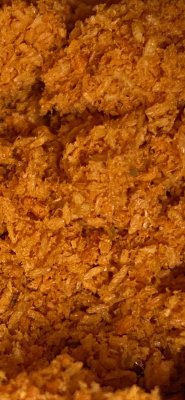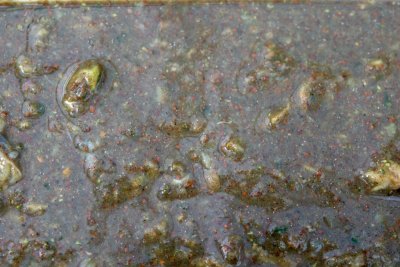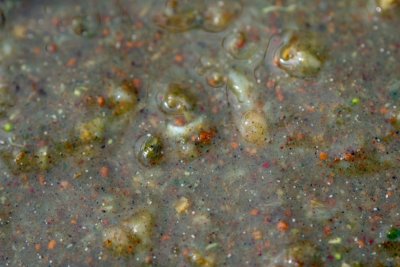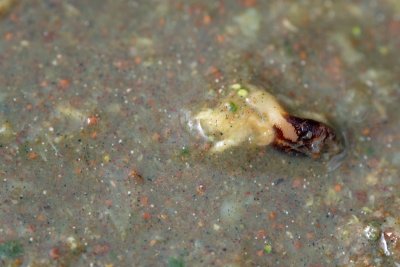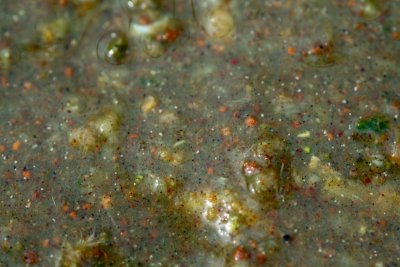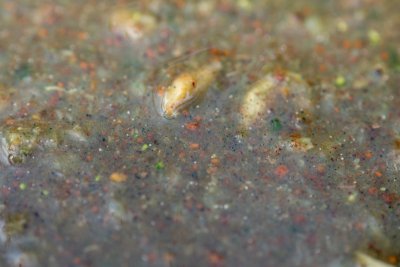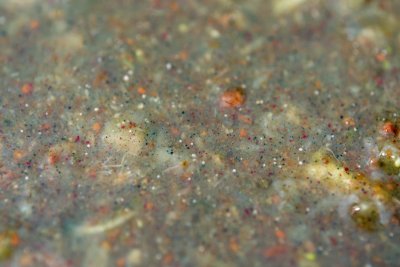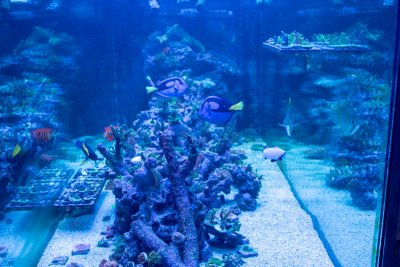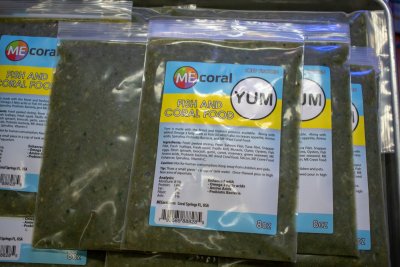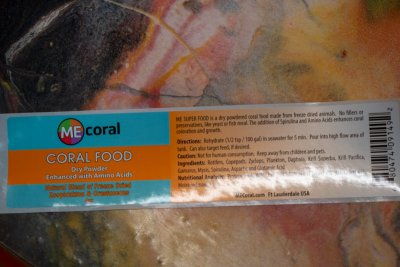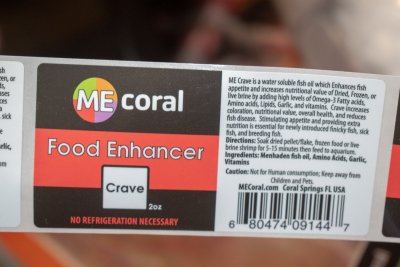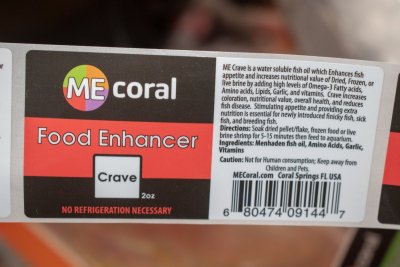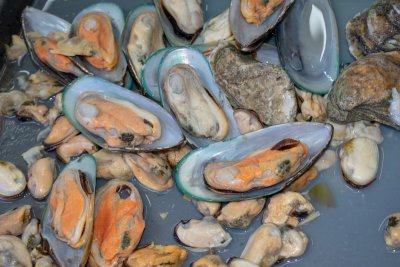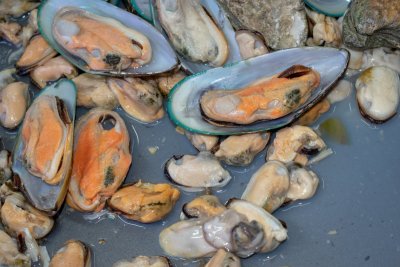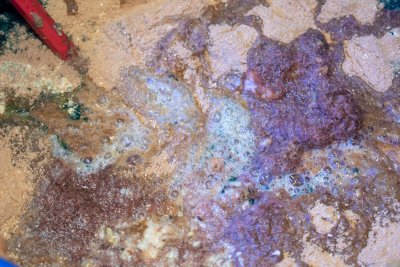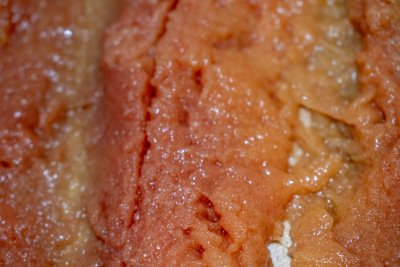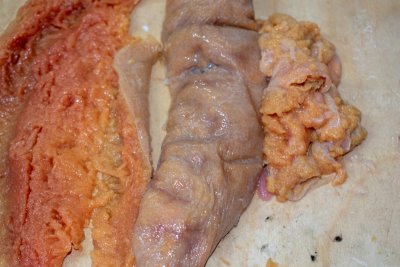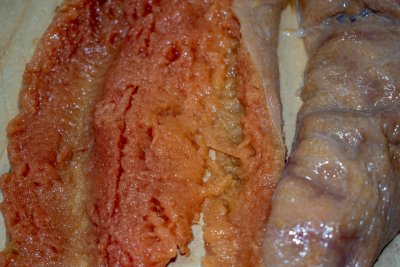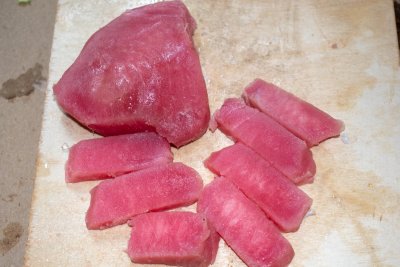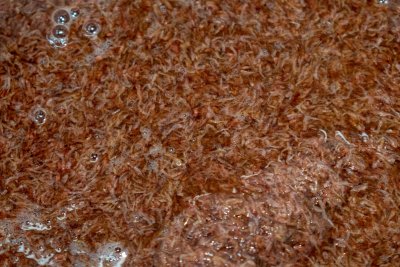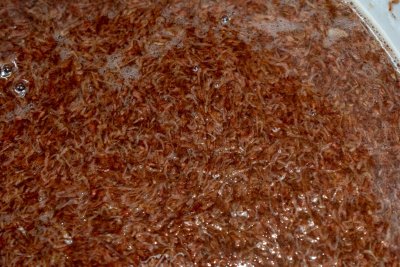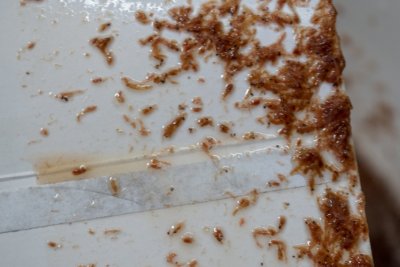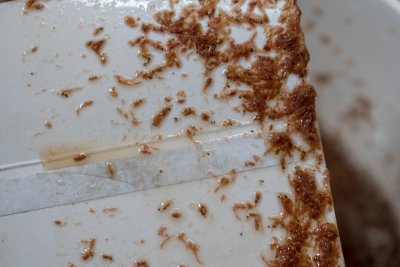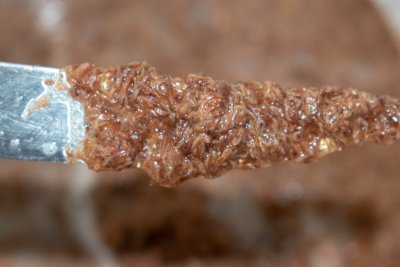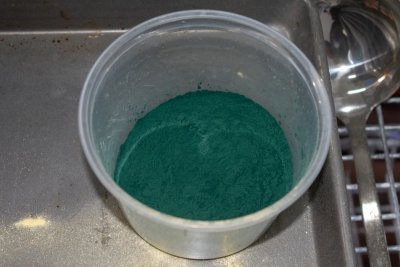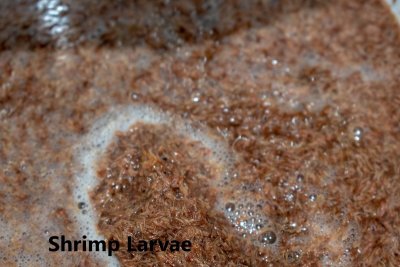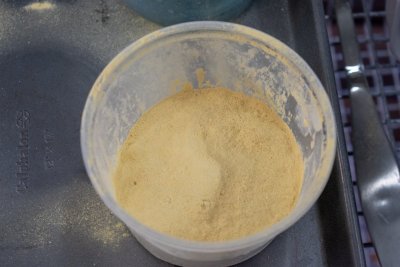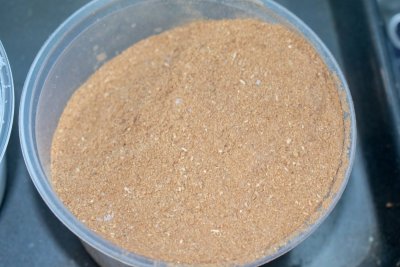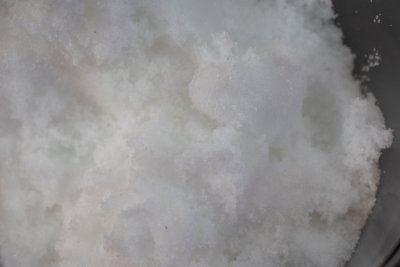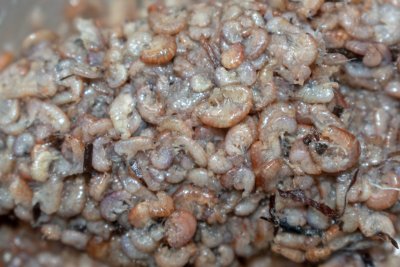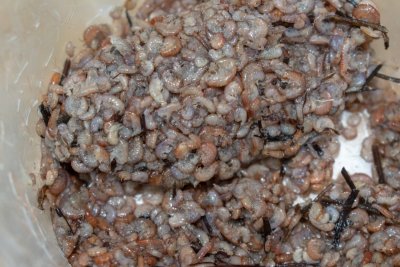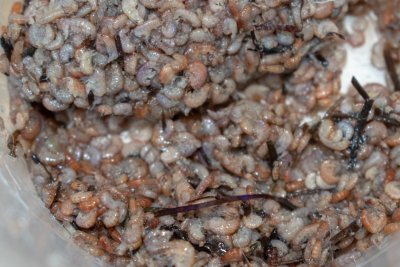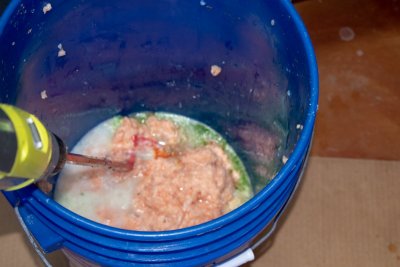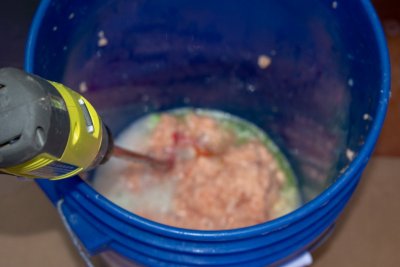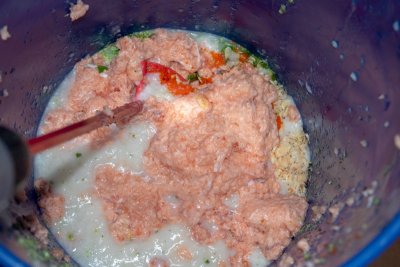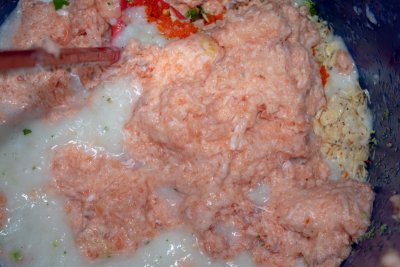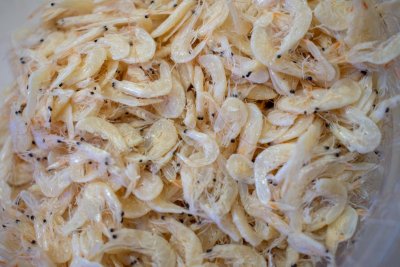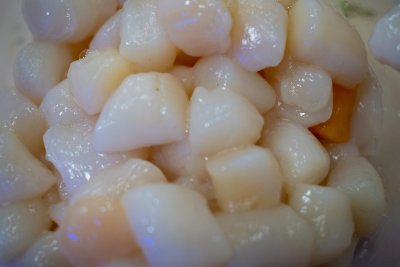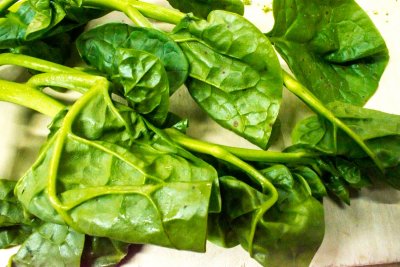Hello Everyone,
Over the years, I have had a lot of questions about my tank. The most frequently asked question is not about lights, equipment, or about chemistry. The most frequently asked question is about how and what I feed my corals. When I got into the hobby in 2010, I used to spot feed each coral but when my collection went from 10 to 100 zoas, it became tedious and tiresome. I observed that the majority of the zoas don’t react (tentacles/mouth don’t close) to the food when you spot feed them. I learned that the smaller polyp zoanthids eat fish poop or micro organisms at various times of the day. So, in order to keep them all happy, I started broadcast feeding. It seemed that some corals were benefitting from immediately getting what they could catch, and the rest would get it throughout the day.
I've been making my own food since 2011 and every year it gets better and better. All fish food brands claim that they are the best, so my method is to mix my food with some of the best food brands’ to make the “bestest” food possible XD. Variety is key. Logically if humans need a diverse variety of food to operate and be healthy, so does your tank. There is absolutely no science behind it. The more variety that is added to your tank, the more nitrates and phosphates are added to my tank, which feed the corals. I’ve run out of food and had to feed pellets in a pinch, but my corals didn’t look as fat and happy as when I was adding my mush. Also, I’ve used ME coral YUM, LRS food, and Rods food until I started to make my own. Once I started making my own mix, I noticed some positive changes in my corals. The polyps were sizably larger, the skirts were fatter, and the polyp’s extension was visible in just a few days using the mix. My fish food mix has changed many times over the years, as I feed and watch the fish for their reaction. If it looks like they spitting stuff out like carrots and garlic, I eliminated it altogether. My recipe has evolved to what it is today based on these observations.
I constantly try to accommodate all the fish by allowing for different sizes of food to feed all my tank inhabitants from the smallest to the largest. Check out a video I created on YouTube about feeding spirulina to rotifers. My food includes a mix of seafood, shellfish, some vegetables, dried powders in different sizes, dried small creatures, amino acids, probiotics, different dry algae, shrimp larvae, wild caught copepods, fish oil and fish eggs. I don’t have exact measurements of everything, and my recipe is based on the availability local fish market and what is freshly caught.
The first few years I made my mush by going to any supermarket and purchase whatever seafood medley frozen bags they had available. As more people kept asking about my food, I started contacting local reefers to buy bigger and better-quality seafood from the seafood market. Everyone would contribute with the cost and the labor involved. Shucking oysters is a pain ask my buddy Matt. ME Coral’s YUM food is very similar to my recipe except he only uses his brand products in his food. I add other products as well from other companies to make it even better.
Disclaimer: Cleaning seafood is a lot of work so if you don’t want to stink up your house (My wife would make us do everything in the backyard) and spend the whole day cleaning shrimps, opening and cleaning all kinds of shelled sea creatures, skinning octopus and squids, just purchase some of the brands I mentioned previously above.
To make your own food you will need a five-gallon bucket and a food processor. The key to this recipe is pulsing everything by itself in small batches and then dump it in the 5-gallon bucket for a final mix at the end. You will also need to add liquid to process the food. You can use tank water or just RO water. Start by pulsing the vegetables. Followed by the shrimp, Salmon, Tuna, mussels, and squid. The longer you leave it in the food processor, the smaller the pieces will get. So, if you have big fish, I recommend to only do a few pulses. Pulse/process everything except Fish eggs, krill, shrimp larvae, copepods and dry ingredients because these are not put in the food processor. Add the Aquavitro’s Fuel or any other liquids at this point along with any other ingredient. You will mix them into the 5-gallon bucket after. If you’re making a bulk quantity of food then a drill with a mixing attachment will be your best friend. I have used a clean small boat paddle to mix it but it was very tiring and time consuming. For smaller quantities any spatula will do. One 5-gallon bucket of food will yield around 100-120 4x6 zip lock bags. Spent around $300. Once the mix is complete, I place the food in ice cube trays or bags and freeze. You can pop them out of the freezer tray into a Ziplock bag if you so desire or leave them in the freezer trays.
Ingredient Estimates:
https://www.aquavitro.com/fuel.php
https://chemi-pure.com/products/vitachem-marine/
https://www.twolittlefishies.com/tlf_prod_foods.php?lang_id=1
https://mecoral.com/product-category/amino/
https://mecoral.com/product-category/fish-coral-food/
https://coralfrenzy.com/





I caught these in sargassum algae that was floating around.


These are from a shrimp farm in the Florida keys.
















Once everything is in the bucket mix away.


3 different methods I use to store and freeze the food.

1 larger cube is enough for 1 or 2 feedings depends on how much live stock you have. I have 1 tank and 6 frag tanks pretty full. Most of the times I thaw out 2 or 3 cubes and feed the whole week. Make sure you cover the container so you don’t stink up your fridge. I also remove the food from the trays and place in a zip lock for ease of use.






Thawed food you can see all the different kinds of

Let me know of any questions you have regarding the food or share your experiences making your own.
Over the years, I have had a lot of questions about my tank. The most frequently asked question is not about lights, equipment, or about chemistry. The most frequently asked question is about how and what I feed my corals. When I got into the hobby in 2010, I used to spot feed each coral but when my collection went from 10 to 100 zoas, it became tedious and tiresome. I observed that the majority of the zoas don’t react (tentacles/mouth don’t close) to the food when you spot feed them. I learned that the smaller polyp zoanthids eat fish poop or micro organisms at various times of the day. So, in order to keep them all happy, I started broadcast feeding. It seemed that some corals were benefitting from immediately getting what they could catch, and the rest would get it throughout the day.
I've been making my own food since 2011 and every year it gets better and better. All fish food brands claim that they are the best, so my method is to mix my food with some of the best food brands’ to make the “bestest” food possible XD. Variety is key. Logically if humans need a diverse variety of food to operate and be healthy, so does your tank. There is absolutely no science behind it. The more variety that is added to your tank, the more nitrates and phosphates are added to my tank, which feed the corals. I’ve run out of food and had to feed pellets in a pinch, but my corals didn’t look as fat and happy as when I was adding my mush. Also, I’ve used ME coral YUM, LRS food, and Rods food until I started to make my own. Once I started making my own mix, I noticed some positive changes in my corals. The polyps were sizably larger, the skirts were fatter, and the polyp’s extension was visible in just a few days using the mix. My fish food mix has changed many times over the years, as I feed and watch the fish for their reaction. If it looks like they spitting stuff out like carrots and garlic, I eliminated it altogether. My recipe has evolved to what it is today based on these observations.
I constantly try to accommodate all the fish by allowing for different sizes of food to feed all my tank inhabitants from the smallest to the largest. Check out a video I created on YouTube about feeding spirulina to rotifers. My food includes a mix of seafood, shellfish, some vegetables, dried powders in different sizes, dried small creatures, amino acids, probiotics, different dry algae, shrimp larvae, wild caught copepods, fish oil and fish eggs. I don’t have exact measurements of everything, and my recipe is based on the availability local fish market and what is freshly caught.
The first few years I made my mush by going to any supermarket and purchase whatever seafood medley frozen bags they had available. As more people kept asking about my food, I started contacting local reefers to buy bigger and better-quality seafood from the seafood market. Everyone would contribute with the cost and the labor involved. Shucking oysters is a pain ask my buddy Matt. ME Coral’s YUM food is very similar to my recipe except he only uses his brand products in his food. I add other products as well from other companies to make it even better.
Disclaimer: Cleaning seafood is a lot of work so if you don’t want to stink up your house (My wife would make us do everything in the backyard) and spend the whole day cleaning shrimps, opening and cleaning all kinds of shelled sea creatures, skinning octopus and squids, just purchase some of the brands I mentioned previously above.
To make your own food you will need a five-gallon bucket and a food processor. The key to this recipe is pulsing everything by itself in small batches and then dump it in the 5-gallon bucket for a final mix at the end. You will also need to add liquid to process the food. You can use tank water or just RO water. Start by pulsing the vegetables. Followed by the shrimp, Salmon, Tuna, mussels, and squid. The longer you leave it in the food processor, the smaller the pieces will get. So, if you have big fish, I recommend to only do a few pulses. Pulse/process everything except Fish eggs, krill, shrimp larvae, copepods and dry ingredients because these are not put in the food processor. Add the Aquavitro’s Fuel or any other liquids at this point along with any other ingredient. You will mix them into the 5-gallon bucket after. If you’re making a bulk quantity of food then a drill with a mixing attachment will be your best friend. I have used a clean small boat paddle to mix it but it was very tiring and time consuming. For smaller quantities any spatula will do. One 5-gallon bucket of food will yield around 100-120 4x6 zip lock bags. Spent around $300. Once the mix is complete, I place the food in ice cube trays or bags and freeze. You can pop them out of the freezer tray into a Ziplock bag if you so desire or leave them in the freezer trays.
Ingredient Estimates:
- Shrimp - 5lbs
- Salmon - 3lbs
- Tuna - 2lbs
- Krill - 2lbs
- Fish Roe - 1lb
- Scallops - 2lbs
- Shrimp Larvae - 3lbs
- Wild copepods - ½ lb
- Mussels - 2lbs
- Squid - 2lbs
- ME Coral Food Enhancer - 16oz
- ME Coral Polyp Extender - 32oz
- ME Coral Coral food dry powder - 200gm
- Two Little Fishies Calan-eeze - 60gm
- Boyd VitaChem - 32oz
- Coral Frenzy smallest pellet - 8oz
- Coral Frenzy Powder - 8oz
- Spirulina Powder - 6oz
- Probiotic Bacteria - 4oz
- Spinach - 1 bag
- Broccoli - 1 bag
https://www.aquavitro.com/fuel.php
https://chemi-pure.com/products/vitachem-marine/
https://www.twolittlefishies.com/tlf_prod_foods.php?lang_id=1
https://mecoral.com/product-category/amino/
https://mecoral.com/product-category/fish-coral-food/
https://coralfrenzy.com/
I caught these in sargassum algae that was floating around.
These are from a shrimp farm in the Florida keys.
Once everything is in the bucket mix away.
3 different methods I use to store and freeze the food.
1 larger cube is enough for 1 or 2 feedings depends on how much live stock you have. I have 1 tank and 6 frag tanks pretty full. Most of the times I thaw out 2 or 3 cubes and feed the whole week. Make sure you cover the container so you don’t stink up your fridge. I also remove the food from the trays and place in a zip lock for ease of use.
Thawed food you can see all the different kinds of
Let me know of any questions you have regarding the food or share your experiences making your own.




